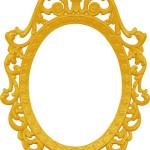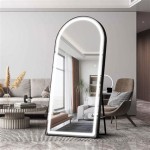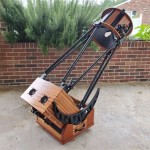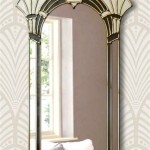How To Get iPhone Mirror On Samsung TV Free
Mirroring an iPhone screen to a Samsung TV allows users to enjoy mobile content on a larger display. This is useful for sharing photos and videos, playing mobile games, or delivering presentations. Several free methods facilitate this screen mirroring process.
Using AirPlay 2 with Compatible Samsung TVs
AirPlay 2 is Apple's proprietary wireless streaming technology. Some newer Samsung TVs have built-in AirPlay 2 support, making screen mirroring straightforward. This built-in compatibility removes the need for third-party apps or hardware.
To mirror an iPhone to a compatible Samsung TV using AirPlay 2, follow these steps:
- Ensure both the iPhone and the Samsung TV are connected to the same Wi-Fi network.
- Open Control Center on the iPhone by swiping down from the top-right corner (iPhone X or later) or swiping up from the bottom of the screen (older iPhones).
- Tap the "Screen Mirroring" icon.
- Select the Samsung TV from the list of available devices.
Mirroring with a Lightning Digital AV Adapter and HDMI Cable
A wired connection offers a stable and reliable mirroring solution, particularly for older Samsung TVs without AirPlay 2 support. This method involves a Lightning Digital AV Adapter and a standard HDMI cable.
To mirror using a wired connection, follow these steps:
- Connect the Lightning Digital AV Adapter to the iPhone's Lightning port.
- Connect one end of the HDMI cable to the adapter and the other end to an available HDMI port on the Samsung TV.
- Switch the TV input to the corresponding HDMI port.
- The iPhone's screen should automatically mirror to the TV.
Utilizing Supported Third-Party Apps
Several third-party apps offer screen mirroring functionality for Samsung TVs. These apps typically require both the app and the TV to be on the same Wi-Fi network.
To use a third-party mirroring app:
- Research and download a reputable screen mirroring app from the App Store onto the iPhone.
- Ensure the Samsung TV and the iPhone are on the same Wi-Fi network.
- Open the mirroring app on both the TV and the iPhone.
- Follow the in-app instructions to connect the devices and initiate screen mirroring.
Users should be aware that the specific steps might vary slightly depending on the app chosen.
Troubleshooting Common Mirroring Issues
If screen mirroring issues arise, consider the following troubleshooting steps:
- Check network connectivity: Ensure both the iPhone and TV are connected to the same Wi-Fi network and that the network is functioning correctly.
- Restart devices: Restarting both the iPhone and the Samsung TV can resolve temporary software glitches.
- Update software: Ensure both the iPhone's iOS and the Samsung TV's firmware are up to date.
- Check app permissions: If using a third-party app, verify that it has the necessary permissions to access the network and screen mirroring functionalities.
- Verify compatibility: Confirm that the chosen mirroring method (AirPlay 2, wired connection, or third-party app) is compatible with the specific Samsung TV model.
Considering Network Bandwidth for Optimal Performance
The quality of screen mirroring depends significantly on the Wi-Fi network's bandwidth. A strong and stable network connection is crucial for a smooth, lag-free experience, particularly when streaming high-resolution content.
To optimize network performance:
- Position the router optimally: Ensure the router is placed in a central location to provide the best possible signal strength to both devices.
- Minimize interference: Reduce interference from other devices operating on the same frequency band.
- Consider a 5GHz network: If available, connect both devices to a 5GHz Wi-Fi network for faster speeds and less congestion.
Exploring DLNA-Compatible Apps for Media Streaming
While not strictly screen mirroring, using DLNA-compatible apps provides an alternative for sharing media content from an iPhone to a Samsung TV. DLNA (Digital Living Network Alliance) allows compatible devices to stream media content over the network.
Using DLNA typically involves:
- Downloading a DLNA-compatible media server app on the iPhone.
- Ensuring the Samsung TV supports DLNA and is on the same network as the iPhone.
- Accessing the shared media content on the TV through the TV's media player or a compatible DLNA client app.
This method is suitable for sharing photos, videos, and music without mirroring the entire iPhone screen.
Advantages of Wireless vs. Wired Connections
Both wireless and wired connections offer specific advantages for mirroring an iPhone to a Samsung TV.
Wireless connections (AirPlay 2, third-party apps) provide:
- Convenience: Untethered mirroring allows for greater freedom of movement.
- Ease of use: Setup is typically straightforward.
Wired connections (Lightning Digital AV Adapter and HDMI cable) offer:
- Stability: Provides a more stable and consistent connection with less susceptibility to network interference.
- Reduced latency: Minimizes lag, which is crucial for gaming or interactive presentations.
- Higher resolution support: Often supports higher resolutions than wireless methods.

How To Connect Phone Tv Screen Mirror Iphone A Samsung Easy Setup

4 Easy Ways To Mirror Iphone Samsung Tv For Free

Screen Mirroring Iphone To Samsung Tv Wirelessly 2024

How To Screen Mirroring Iphone Samsung Tv

Screen Mirror To Samsung Tv Android Mac Ios Free App

Screen Mirror To Samsung Tv Android Mac Ios Free App

6 Free Ways To Mirror Iphone Samsung Tv Without Apple

Screen Mirroring Iphone To Samsung Tv Wirelessly No Apple Required 2024

How To Screen Mirror Iphone Samsung Tv In 3 Steps Free

2024 How To Screen Mirror From Your Iphone Samsung Tv








